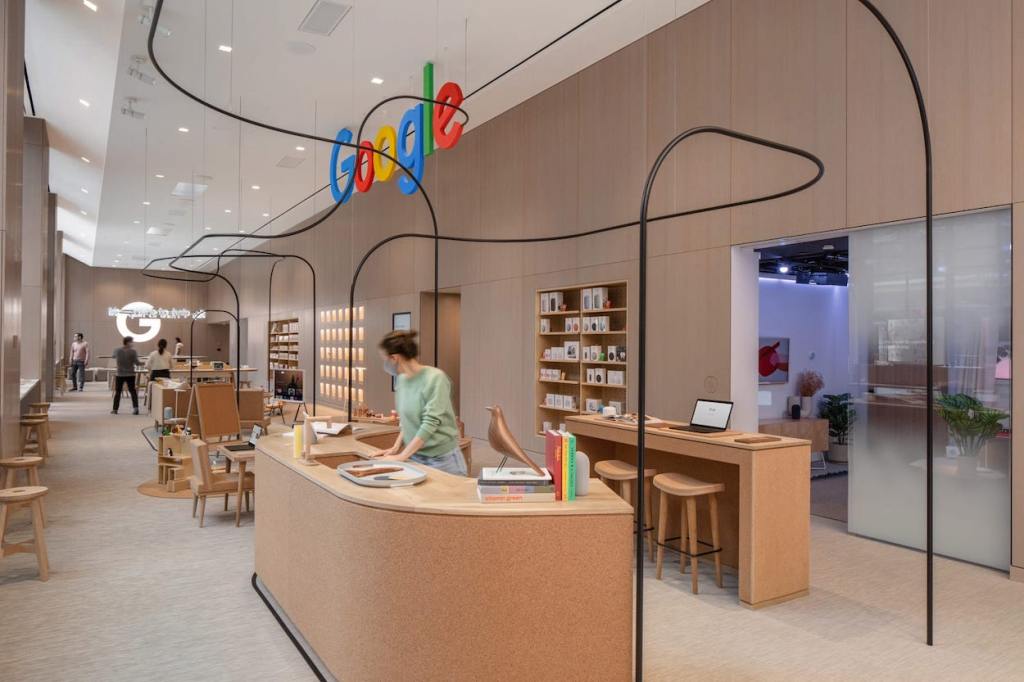A future looking perspective on Retailer's world in coming years and me making sense of the technology events around us.

Globally, the retail industry went through an interesting shakeup in the last three years. The share of digital retail revenue in total retail revenue saw a sharp climb in 2020, rising from 14.3% in 2019 to 18.5%. However, it later settled at 20.2% in 2023.
Investments in digital skyrocketed during the pandemic and many real estate deals were renegotiated or exited. Supply chain disruptions also brought Retailers on its knees. Now, the overall outlook for retail looks slow with a projected growth rate of only 3.9% in 2023. It is likely to grow at slower rate in the next four years (around 4% or lower).
In 2019, everything from Meta to Web3 and IoT were considered promising technology. Meta was expected to impact the sphere of customer experience, blockchain in the sphere of supply chain and so on. Then, last year, Generative AI caught the imagination of all businesses and retailers across the globe. As of today, it is known to impact digital retail through its ability to change marketing operations, customer experience management, and many more areas. McKinsey says the overall impact will be about $400 to $660billion a year.
If you are a retailer and looking at this rebalanced and stirred-up world of digital and physical retail and wondering what new paradigms to consider while building plans and strategies based on everything (digital) around us, here is a little something I would like to share.
Three ideas to consider as you build your future digital and retail enterprise.

1. Think of media in its new avatar:
Among all the business functions which are impacted by Generative AI the most obvious one is media and content because, well, it is ‘Generative AI’. The technology could increase the productivity of marketing function with a value of 5%-15% of total marketing spending says McKinsey
I believe about 50% of digital assets I call media (images, product data, styled photos, social posts, consumer engagement, email templates, web content, videos, audio etc.) would be supported by Generative AI in 2 years and therefore must be much impressive creatively.
If this was the case, all the current vehicles of production which develop this media (collectively referred as agencies) will have two key threats.
- Impact on commercial model: Commercial models will have to change when a high productivity and generative tool is available at every agency’s disposal.
- Accountability to generate real sale: Greater accountability will have to be introduced for all the marketing, media, and engagement. The function will be under pressure to justify the marketing ROI. The generative tools will not come cheap and not using them will not be an option and above all creativity will be commoditised for a while. Although, true creativity will outshine all.
The older models of developing broadcast media, digital media and having your trusted entities to build, engage and broadcast will be significantly challenged. (Yes, there are many businesses still running on older models where high level of inefficiencies exist in marketing operations.
Generative AI will indeed introduce a new avatar of media that will be either truly creative or just mediocre and it will have new hybrid methods of developing it.
One unit fully aligned to brand’s purpose and business objectives should ideally have all the capabilities to develop all this media (across channels) in its new avatar.
2. Make store as your technology powered asset.
The massive re-balance of customers coming back to the stores after the pandemic while maintaining their new online activity highlighted the X factor of physical stores.
Of course, the focus on omnichannel capabilities increased during the pandemic. Only 8% retailers had omnichannel capabilities in 2018. It reached 52% in 2020 according to a 2021 survey. 1
Yes, some retailers (e.g., Canada Goose, Story, Neighbourhood Goods, Camp, Nike etc.) have excelled at the store experience2 but the experience is possible by technology powered convenience factor. To elevate the X factor requires retailers to re-focus their technology linked efforts in re-inventing the role of stores. For example, the use of dynamic pricing displays, catalog extensions, use of Generative AI to create virtual try-on of a product and making them available when they visit the stores and Generative AI enabled concierge staff to provide a superior experience to the customers are all examples of technology enabled convenience.
All such technology powered solutions will impact hard business metrics across ALL channels and not just stores and that indeed re-asserts the irrelevance of channel centric thinking in building action plans and strategies.Store is the best asset (and not a channel) to be powered through technology because it represents your business like no other entity does.
3. Redefine customer service.
Elevated customer services begin with empowered employees.
Although Gartner predicts that 1 out of 10 workers in customer support will be replaced by AI by 2026 the essential action for businesses is really in retraining and empowering the remaining 9.
In an era when every customer begins to get massive amounts of synthesised level of information with a click of a button, the expectations from all businesses who provide their support/services for the goods or services they sell will have to be significantly information rich.
Businesses will be expected to operate at the same level of efficiency and information as the customers are used to in their personal and professional lives.
All businesses that have been working on initiatives to personalise customer experiences or build more effective marketing campaigns will have to do away with creating campaign calendars and think of constant communication in real time with your audiences.
All businesses that depend on large amount of customer data and run post facto analysis and hold control within their hierarchies, will have to empower customer service and support reps with real time synthesised knowledge about the customer and their services to address customer queries, complaints and literally every form of engagement.
It may appear daunting to stay on top of the technology trends and ignore the hyperboles but building practical action plan and strategy is possible. Being bold and knowing what is of the highest value to you and your customers alike is an essential part of it. The ability to deliver the technology benefits should be based on what value you want to deliver to your customers and not what the technology can do for you. Putting it simply at a visceral level – technology linked advantages as promised will only be realised when it significantly impacts (1)human experience (2) capability (3) convenience, and most importantly brings business benefits as a consequence of all three of them.
References
1 – Digital Commerce 360 Report in 2021
2 – Store is Media by Doug Stephens
Other Posts
Digital Minimalism | Exceptional Retail | Digital Retailer’s Litmus Test





 It is important to remember that – the functionality could be same as any ecommerce store the CUSTOMER EXPERIENCE SHOULD BE UNIQUE TO YOUR BRAND.
It is important to remember that – the functionality could be same as any ecommerce store the CUSTOMER EXPERIENCE SHOULD BE UNIQUE TO YOUR BRAND. Did your vendor also cover non-functional software requirements. Examples like ‘expected concurrent users, page views per second, other performance benchmarks, global configuration settings, internationalisation, data migration, archiving rules’ etc? Did you participate in completing the loop?
Did your vendor also cover non-functional software requirements. Examples like ‘expected concurrent users, page views per second, other performance benchmarks, global configuration settings, internationalisation, data migration, archiving rules’ etc? Did you participate in completing the loop?




